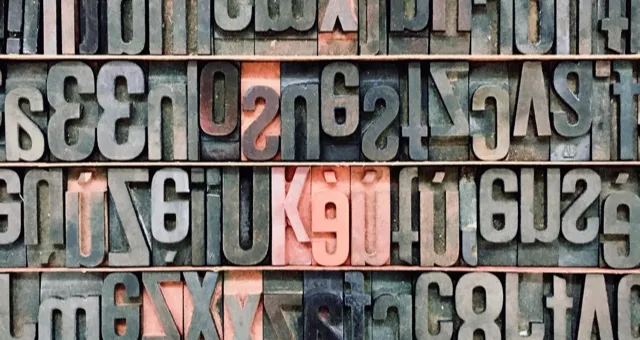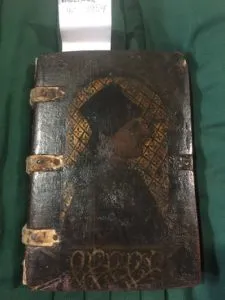
The Anatomy of the Book
Ever wondered about the structure of the physical book? Ever wondered what those weird papers at the beginning and back of books are called? Or those weird metal fittings at the corners? Then you have come to the right place!
Back in July, I had the opportunity to attend the astonishing Colorado Antiquarian Book Seminar, where we spent five jam-packed days talking about everything and anything book-related from how to sell a book to how to collate a book from the handmade paper era. As one of many book obsessed people, it was a lot of fun to hear about the anatomy of a book. So here’s a brief overview of the structure of a book. It’s not comprehensive but it’s a start with some fun old timey book stuff.
 Interested in learning more about medieval books? Check out this interview I did about Renaissance pop-up books with a curator at the Newberry Library. Or if you want more books about books, here’s a list of 100 such books.
Interested in learning more about medieval books? Check out this interview I did about Renaissance pop-up books with a curator at the Newberry Library. Or if you want more books about books, here’s a list of 100 such books.
Boards
Most of us know the boards as the covers of the book. There’s a front and back board.Signatures
This is not a written signature as we think of it. Signatures are groupings of folded paper that are combined to make up the body of the book. They are then sewn together. You can see this especially with certain hardback books. Fun fact: Back in the handmade paper era, books were often printed and sold unbound. (I think this practice continued into the machine-made age too). People who purchased books would send them to a printer for binding. That meant that signatures needed to be “signed” so the printers knew which order the pages were to be in. So they would often be labeled A–Z, AA–ZZ, etc.The Text Block
The text block is the combination of all the signatures.Endpapers
These are the papers between the boards and the text block. Endpapers tend to be blank, though they have historically been decorated beautifully. Check out this post on the beauty of endpapers. The endpapers are pasted to the board and often serve as the very first (and last) pages of the book.Headband
This is a little strip of cloth at the top and bottom of the book, next to the spine over the pages. It was intended to protect the sewings of the signatures but often is now just a decorative part of the book. These are just a few parts of the modern book. There’s more but it’s a good start.Less Common Parts of Books
These are aspects of books that belong largely to the past.Deckle
Back when paper was handmade, there was an uneven edge to the paper that would have to be cut.Bosses
These are the metal raises pieces often found at the four corners of the cover and one in the center. You find these decorative pieces on medieval books. Terry Belanger of the Rare Book School pointed out that these books were not intended to be shelved spine up, but rather laying down.Clasps
Many medieval books had clasps to keep the book closed. Belanger pointed out that clasps weren’t necessarily needed, but they did keep the dust out. They can be extremely ornate or purely functional.Chains
In the medieval ages, books were extremely valuable since they were handmade. Some institutions actually chained their books to desks and other furniture to prevent them from “wandering off.” Here’s a cool video from the Newberry about chained books. It also shows bosses on it.Binding Styles
The bindings of some books can be astonishingly cool. Back when people got their books bound separately from the printing, they could send them to various craftsman to get exquisite bindings. Leather work can be really beautiful with delicate stamping or carvings. Even more valuable, Belanger explains, are velvet bound covers, which are very delicate. Books could be inlaid with jewels or even have embroidered bindings.
Beautiful bound book at the Newberry Library
Photo credit: Elisa Shoenberger












